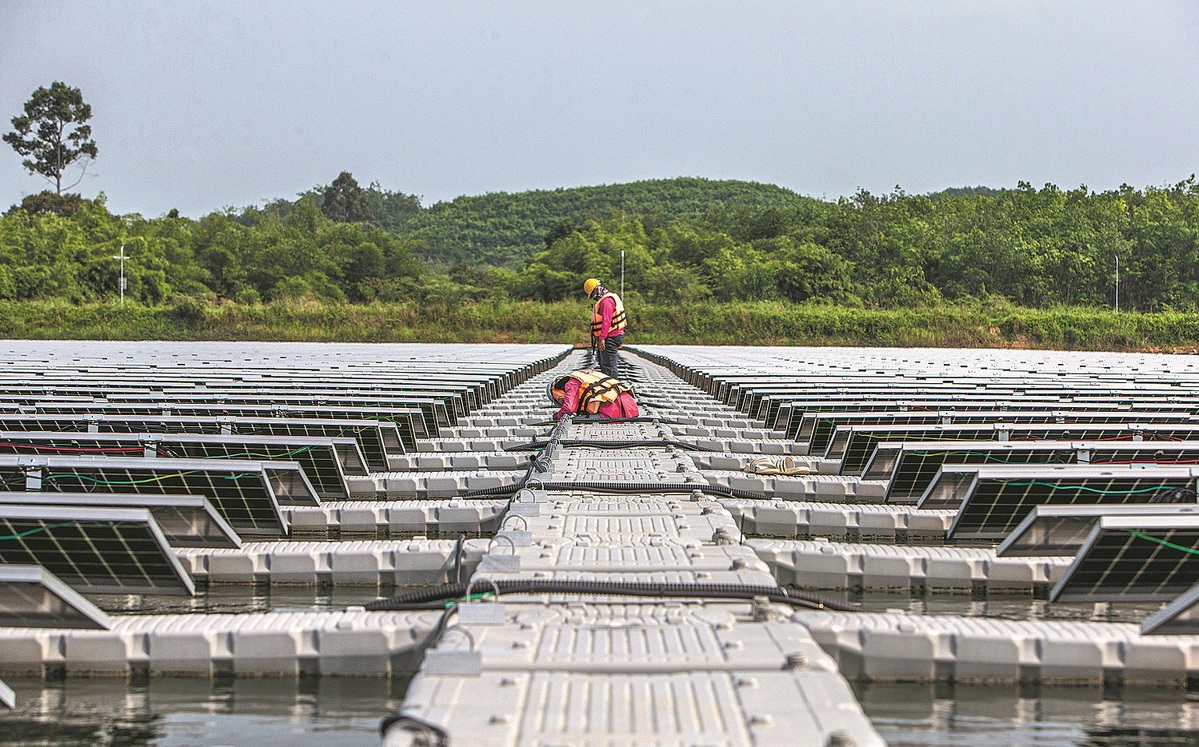Region advances with clean energy, innovation, infrastructure


Warning issued
Despite the progress made, the UN report indicated that the Asia-Pacific region is still lagging behind in achieving all the SDGs. It warned that the region has only made 14.4 percent of the progress required. At the current pace, it will miss 90 percent of the 118 measurable SDG targets by 2030 unless efforts are stepped up.
Alisjahbana, from ESCAP, said: "While there are impressive national accomplishments across the 17 goals, none of the countries in the region are on track to reach them, and overall achievement is much lower than anticipated for the midpoint.
"In developed and developing countries alike, persistent data gaps remain. Governments must renew their commitments to producing relevant, timely, granular, high-quality information to monitor and review the march toward the SDGs," she added.
While there is enough data for countries to act with greater ambition on implementing the SDGs, data availability for evidence-based follow-up and review remains a significant hurdle in carrying out the 2030 Agenda.
For data collected in the region from 2017 to last year, the number of indicators with sufficient data availability rose from 63 to 128, but the rate of increase in data availability and sufficiency continued to slow, with only a 4 percent rise in sufficient data availability last year.
Rachael Beaven, director of ESCAP's Statistics Division, said that while the full impact of COVID-19 has yet to be quantified, data on a limited number of indicators are beginning to reveal the full effect the disease had on people, the planet and prosperity.
"Although data availability for SDGs has doubled since 2017, there is still insufficient data for 51 out of 169 targets," she added, calling for support from government sectors and research institutions for the data collecting system and to better serve policymaking bodies.
Given the slow rate of improvements in data availability, it is estimated that the Asia-Pacific region will not have enough data to measure every SDG indicator by 2030.
Data availability among small developing island states is significantly lower than for landlocked developing countries and least-developed nations, although it has gradually improved over time.
The top five destinations with the poorest performances in providing the number of such indicators are the Northern Mariana Islands, American Samoa, Guam, French Polynesia and New Caledonia.
For data availability last year, the UN report showed that nearly half of SDG indicators were either insufficient or not available, most noticeably for Goals 5 (gender equality), 14(life below water) and 16 (peace, justice and strong institutions). For Goals 5 and 14, only 14 percent and 20 percent of data respectively was available.
Arman Bidarbakhtnia, head of the Statistical Data Management Unit at ESCAP's Statistics Division, said: "It is true that there is insufficient data for nearly half of the SDG indicators. This in itself is an important message that the report has emphasized by calling on governments in the region to step up their efforts and show more commitment to producing this data."
However, he said the available data provides valuable information for nearly 70 percent of the SDG targets, and the lack of data for the other 30 percent does not undermine the quality of available data and subsequent accuracy of the analysis.
"With more data, we could present a more comprehensive picture of progress, but existing data still provide us with the best knowledge we can have on regional progress, our priority areas and obstacles in achieving the SDGs," Bidarbakhtnia said.
Bridging the SDG data gaps in Asia-Pacific requires public and private investment, but finance is not the only factor in collecting such information, the report said.
By adopting innovative approaches, existing administrative processes and survey exercises can be used to produce data that bridge the gaps and enable SDG monitoring and evidence-based policymaking, in particular for Goals 5 and 16, where the largest data gaps exist, the report added.
Bidarbakhtnia said: "The report provides a set of tools, standards and initiatives for countries to enhance data availability for Goals 5 and 16, where our analysis shows all countries- high- and low-income alike — have not made progress in improving data availability since 2017.
"There is no doubt that we need more investment in statistical development in low-income countries. But the fact that countries with the highest incomes in the region have not progressed in making more data available for Goals 5 and 16 suggests that commitment to transparency and evidence-based policymaking are equally important for statistical development," he added.
yangwanli@chinadaily.com.cn


















